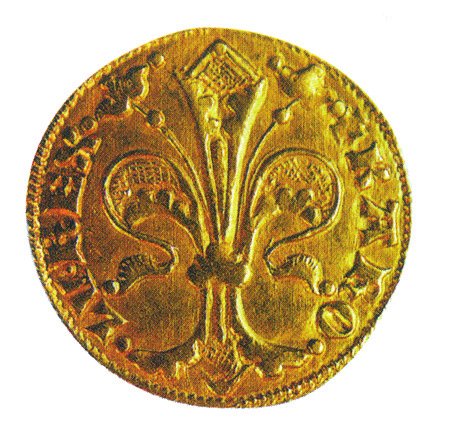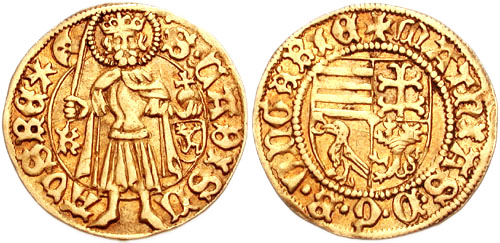Hungarian forint: Europe’s favourite currency

In Europe’s Medieval era, the Hungarian golden forint held a prestigious status as one of the most favoured currencies on the ‘Old Continent’. This esteemed position was attributed to the resilience of Hungarian coins, as Hungary emerged as a leading producer of pure and high-quality gold in Europe.
Before the mid-13th century, the scarcity of good-quality gold in Europe hindered the creation of gold coins. Instead, gold coins flowed into Europe from the Middle East and Africa, where gold was abundant.
European monarchs and nobles, lacking good gold resources, crafted silver coins for long-distance trade. However, the constant devaluation of these coins, achieved by reducing their silver content, rendered them unreliable for ordinary people. Only the experts could tell by their appearance or other physical features how much silver these coins contained. The aftermath of the Crusades aggravated the issue, as Eastern products flooded the European market, challenging payment capabilities.
Hungary enters the game with its valuable golden forint
Hungary’s entrance into the game marked a significant turning point. In the late 13th century, amidst chaos, Charles I (Károly Róbert) managed to acquire the throne, defeating oligarchs and establishing a powerful, centrally governed kingdom. Supporting landlords in gold discovery facilitated Hungary becoming the primary global producer of gold, meeting 11/12 of the world’s (i.e. Europe, Asia and Africa) gold demand through Czech and Hungarian gold mines.

Therefore, both kings decided to mint gold coins following the Florence pattern, which explains where the name of the Hungarian currency comes from. The Hungarian gold forints depicted the Anjou coat-of-arms and Saint Ladislaus (1077-1095), g7.hu wrote.
Those coins became extremely popular in Europe because they held their value for decades. For instance, in 1361, a debt owner told the Frankfurt am Main authorities that he would settle his debts in Hungarian forint.
In 1335, Charles I prohibited the export of unprocessed precious metals, reflecting the strategic importance of Hungary’s gold resources. However, this abundance posed challenges, causing goods production in Hungary to become expensive, affecting competitiveness in the markets and leading to trade balance issues.
Despite these challenges, Hungary retained its status as Europe’s second-largest gold producer until the discovery of America and the influx of Latin America’s gold, which eventually led to Spain’s bankruptcy.
The golden forints minted during King Matthias’s reign (1456-1490) also gained widespread popularity. These forints were reproduced in regions such as Russia, North Italy and the Habsburg Empire, but the forint remained distinctly a European currency, not reaching Asia or Africa. In the 15th century, Hungarian forint coins depicted the Madonna and Saint Ladislaus.

Read also:
- ‘Who’ did we pay with? – the Forint throughout history – Read more HERE
- TOP5+1 surprising facts about the Hungarian Forint in THIS article
Source:






The Longevity of the forint, will ALL and it mounts, the “pressures” on Hungary, predominant, bought created, through the Leadership of Prime Minister – Victor Orban, and his Minister of Finance – Mihaly Varga, that continues to CRUSH broadsheet Hungary, the sustainability of the forint as the currency of Hungary, what’s its FUTURE ?
Orban & Varga – in partnership have been instrumental, in major part, setting the Economic & Financial wrongful path, that has been the principal catalyst or reason(s) – why we in Hungary this day – this time, we are “strongly” trending on a course that will end as a cataclysmic Hungarian disaster.
Mihaly Varga – “needs” extremely close attention paid to his “next” propaganda civilian / media release on the forint – euro subject.
Varga – his Ministerial portfolio, his “ownership” of responsibilities, the “nightmare” of the forint future in our currency Hungary, it’s continual “under siege” position, the FACT in the time of Mihaly Vargas appointment as the Hungarian Finance Minister – has seen it’s humongous de-valuation.
Not a good read on Varga’s “curriculum vitae.”
Hungary, the in-stability of all the major core componentry of our Economy, as a country, the destabilized place, no STABILITY within the Economic & Financial sections of our “flimsy” rubbery economy, led by a Government, that continues to establish change from Governance of Democracy to that of a Dictatorship, the fragmentation of our economy, the external” tightening” pressures on Hungary, from within Europe & Globally, the year 2024 – could it be, using the Donne 17th century poem words – “for whom the bell tolls” for an examination purpose, looking seeking of answer’s – the future of Hungary, in this the year 2024 ?
The nadir, of our current country “imploding” picture, the gargantuan pressures placed on us, by the present Government, lead by Victor Orban and the Minister of Finance – Mihaly Varga, we live in the continual times of decline, social and growing economic hardships, that, clear light and clear blue skies – our FUTURE remains “smothered” in darkness and gloom.
Orban is in a clear path to Hungary’s EU exit. They won’t tolerate his conduct for much longer. When Hungary stops receiving EU money, our economy and country will collapse. But we don’t worry; the Chinese are ready to step in with billions and take financial control of our country.
“Orban is in a clear path to Hungary’s EU exit. They won’t tolerate his conduct for much longer. When Hungary stops blahblahblah..”
..
“Sir, this is a Wendy’s.”